|
In the evolving landscape of the modern workplace, managing time and attendance has transcended its traditional confines. This is especially true for organizations that harness specialized skill sets, where the dynamics of hourly pay and the power of a shared vision coalesce to drive innovation. The challenge lies in fostering an environment that not only respects the tangible metrics of time and attendance but also, and perhaps more crucially, nurtures the intangible elements of creativity, commitment, and vision. The Traditional Paradigm: Time as Currency Historically, the concept of time and attendance in the workplace has been straightforward: employees are compensated for the hours they work, with the underlying assumption being that presence correlates with productivity. This model, while effective in many scenarios, particularly for routine tasks, often falls short in environments where specialized skills and innovation are at play. For roles that demand a high level of creativity, problem-solving, and specialized expertise, the linear relationship between time spent and value created can become blurred. In these contexts, the innovation mindset thrives not on the quantity of hours logged, but on the quality of ideas generated and executed. Hourly Pay vs. The Power of Vision: A Dichotomy? At the heart of the debate between hourly pay and vision-driven work lies a fundamental question: can the pursuit of innovation be quantified in hours, or is it more intrinsically tied to the alignment with a broader vision? Hourly pay structures, with their clear boundaries and straightforward metrics, offer a sense of security and simplicity. They are easily measurable and provide a direct linkage between effort and reward. However, they might inadvertently place constraints on the innovation mindset, as they prioritize time over outcome, potentially stifling creativity and risk-taking. Conversely, embedding the power of vision into the workplace ethos can unleash unprecedented levels of innovation and engagement. When employees are rallied around a shared vision, their work transcends the transactional nature of hourly compensation. They are motivated by the impact they can create, the problems they can solve, and the future they can shape. Bridging the Gap: Time, Attendance, and Beyond The crux of modern workforce management lies in finding a balance between these paradigms. This involves recognizing the importance of time and attendance while also fostering a culture that values and rewards innovation and alignment with the company's vision. 1. Flexibility in Time Management Adopting flexible time management policies can accommodate the ebb and flow of creative processes. This might include flexible hours, recognizing the value of deep work sessions, and allowing for non-traditional work patterns that cater to peak productivity periods. 2. Outcome-Based Evaluation Shifting the focus from hours worked to outcomes achieved encourages employees to channel their efforts into innovation and efficiency. This approach rewards the realization of ideas and the achievement of goals that align with the company's strategic vision. 3. Cultivating a Vision-Centric Culture Creating a work environment where the company's vision is clearly communicated, embraced, and lived by every team member can transform the approach to work. When employees see how their contributions fit into the larger picture, their motivation shifts from watching the clock to making meaningful progress. 4. Continuous Learning and Skill Development Investing in the continuous development of specialized skill sets ensures that the workforce remains at the forefront of innovation. This not only enhances the company's competitive edge but also reinforces the value placed on employees' growth and contributions beyond mere hours spent. Harmonizing Time, Talent, and Vision The future of work demands a nuanced approach to managing time and attendance, particularly for roles steeped in innovation and specialized skills. By marrying the practicalities of hourly compensation with the aspirational qualities of a shared vision, organizations can cultivate a dynamic and motivated workforce. This workforce is not bound by the ticking clock but propelled by the collective pursuit of innovation, excellence, and meaningful impact.
0 Comments
Maintaining a culture of accountability is crucial for the success and sustainability of an organization. However, fostering accountability should not come at the expense of overlooking the individual capacities and personal boundaries of employees. Striking this delicate balance is key to creating a productive, respectful, and inclusive workplace.
Understanding Accountability Accountability in the workplace goes beyond merely assigning tasks and expecting them to be completed. It's about creating an ecosystem where employees feel a sense of ownership over their responsibilities and are motivated to deliver their best work. This requires clear communication, mutual respect, and a deep understanding of each individual's role within the organization. Recognizing Individual Capacities Each employee brings a unique set of skills, experiences, and personal circumstances to the table. Recognizing and appreciating this diversity is the first step toward establishing a culture of accountability that respects individual capacities. Leaders must ensure that workloads are distributed fairly and that expectations align with each employee's abilities and resources. Overloading employees without consideration for their capacity can lead to burnout, decreased productivity, and a decline in morale. Respecting Personal Boundaries In the pursuit of accountability, it's essential to respect the personal boundaries established by employees. This includes acknowledging their work-life balance, personal commitments, and the need for mental and physical well-being. Encouraging employees to communicate their boundaries and limitations can foster a supportive environment where individuals feel valued and understood. Strategies for Balancing Accountability with Capacity and Boundaries 1. Open Communication Create channels for open and honest communication, allowing employees to express concerns, provide feedback, and discuss their capacities and boundaries without fear of reprisal. 2. Flexible Work Arrangements Consider implementing flexible work arrangements that accommodate different working styles, personal responsibilities, and peak productivity times. 3. Regular Check-ins Schedule regular one-on-one check-ins to discuss progress, address challenges, and reassess workloads and deadlines as necessary. 4. Professional Development Invest in professional development opportunities that allow employees to enhance their skills, increasing their capacity and confidence in managing responsibilities. 5. Recognition and Support Acknowledge and reward achievements and efforts, showing appreciation for hard work and dedication. Offer support and resources to help employees overcome obstacles and succeed in their roles. Accountability is a two-way street that requires a nuanced approach, balancing organizational goals with the individual needs of employees. By recognizing capacities, respecting boundaries, and fostering open communication, leaders can cultivate a culture of accountability that promotes high performance, employee satisfaction, and sustainable success. In doing so, organizations not only achieve their objectives but also support the well-being and growth of their most valuable asset— their people. Elevating Quality of Life: The Impact of Coaching on Culture Development and Organic Marketing3/13/2024 The pursuit of success often consumes our focus, leaving little room for personal growth and development. However, the importance of cultivating a supportive culture and embracing organic marketing strategies cannot be overstated. Enter coaching – a powerful tool that not only enhances individual and team performance but also fosters a positive culture and drives organic growth. Cultivating a Supportive Culture
Coaching plays a pivotal role in improving the quality of life for individuals and teams while driving culture development and organic marketing strategies. By fostering a supportive culture rooted in empowerment, effective communication, and continuous learning, coaching lays the foundation for success. Moreover, coaching enables organizations to embrace organic marketing strategies centered around authenticity, creativity, and adaptability, ultimately driving sustainable growth and success in today's dynamic marketplace. Navigating Capacity and Boundaries: The Key to Sustainable Performance in Professional Roles3/11/2024 The ability to perform at peak levels is often seen as the hallmark of success and competence. However, sustaining high performance over time necessitates a deep understanding of one's capacity and the establishment of clear boundaries. Let's explore the balance between maximizing performance and acknowledging our limitations, offering insights on how professionals can maintain effectiveness while ensuring long-term well-being.
Understanding Capacity: More Than Just Time Management Capacity in a professional context extends beyond the mere allocation of hours in a day. It encompasses the physical, mental, and emotional resources available to an individual. Recognizing one's capacity involves self-awareness about energy levels, cognitive load, and emotional resilience. High performance is not just about doing more in less time but about optimizing the use of one's resources to achieve the best outcomes. Setting Boundaries: The Foundation of Sustainable Performance Boundaries in the workplace are essential for protecting one's capacity. They help in delineating what one is willing to take on and define the limits of engagement with work tasks and responsibilities. Effective boundaries can prevent burnout, reduce stress, and maintain a healthy work-life balance, all of which are crucial for long-term performance sustainability.
The Role of Communication Effective communication is pivotal in maintaining boundaries and managing capacity. Articulating one's limits and negotiating workloads with colleagues and superiors fosters a supportive work environment. It helps in setting realistic expectations and fosters a culture of respect and understanding. The Power of Delegation: Delegation is a key strategy in managing capacity By entrusting tasks to others, professionals can focus on areas where they add the most value, thereby enhancing overall team performance and individual job satisfaction. Recognizing the Signals: Being attuned to the signs of exceeding capacity is crucial. Symptoms such as chronic fatigue, decreased productivity, and disengagement signal the need to reassess workload and boundaries. Regular self-check-ins and feedback from peers can aid in this recognition. Embracing Balance for Peak Performance The journey towards sustaining peak performance in professional roles is a dynamic process that requires continuous adjustment and self-reflection. By understanding one's capacity, setting and respecting boundaries, and embracing the principles of communication and delegation, professionals can not only achieve high levels of performance but also ensure their well-being and job satisfaction in the long run. Let's prioritize not just the outcomes we achieve but also the sustainable practices that get us there. Together, we can redefine success in the professional realm, making it synonymous with balance, well-being, and resilience. The journey from stagnant performance to high efficiency is often met with unique challenges. Individuals who find their progress at a plateau may struggle to embrace the practices and mindset of high-performing professionals. This blog post delves into the root causes of this struggle and offers insights into bridging the gap towards elevated performance.
The Comfort Zone Conundrum One of the primary barriers to embracing high performance is the comfort of the familiar. Stagnant performance often results from routines and processes that, while no longer effective, provide a sense of security. Stepping out of this comfort zone requires not just a change in behavior but a significant shift in mindset. Fear of Failure The fear of failure looms large for many. High performers often embrace risks and view failures as opportunities for growth. For those not used to this approach, the potential for failure can be paralyzing, preventing the adoption of new strategies that could elevate their performance. Skill Gaps and the Learning Curve High performance is underpinned by a continuous commitment to learning and skill development. Individuals experiencing stagnant performance may be deterred by the perceived steepness of the learning curve or may not know where to begin in addressing their skill gaps. Lack of Clarity and Direction Without a clear understanding of what high performance entails in their specific context, individuals may struggle to adopt relevant practices. The absence of clear goals, benchmarks, and role models can leave one directionless and unable to progress. Overwhelm and Capacity Mismanagement For some, the sheer volume of tasks and responsibilities can be overwhelming, making it difficult to prioritize and focus on high-impact activities. Mismanagement of one's capacity can lead to burnout, further hindering the ability to perform at a high level. Strategies for Overcoming Stagnation Embrace a Growth Mindset Adopting a growth mindset, where challenges are seen as opportunities to learn and grow, can be transformative. This mindset encourages resilience and a proactive approach to overcoming hurdles. Incremental ChangesBig leaps can be daunting. Starting with small, manageable changes in routine and gradually building on them can make the transition to high performance less overwhelming. Seek Guidance and Mentorship Learning from those who have successfully navigated the path to high performance can provide valuable insights and inspiration. Mentorship can also offer personalized guidance and support. Focus on Continuous Learning Identifying and addressing skill gaps through courses, workshops, and self-study can enhance one's ability to perform. Emphasizing continuous improvement keeps skills relevant and sharp. Prioritize and Delegate Learning to prioritize tasks based on impact and delegating when appropriate can free up time and energy for high-value activities. Effective time management is a cornerstone of high performance. Building Bridges to High Performance The journey from stagnation to high performance is unique for each individual but understanding the common barriers can demystify the process. By addressing fears, embracing continuous learning, and making incremental changes, individuals can begin to align with the practices and mindset of high performers. High performance is not an exclusive club but a reachable state with the right approach and mindset. Let's commit to personal growth and the pursuit of excellence, transforming challenges into stepping stones towards our peak potential. Fostering an organizational culture that accommodates and nurtures varying levels of capacity and performance is more than a moral imperative—it's a strategic advantage. A workplace that recognizes and values diversity in performance and capacity can harness a broader range of talents, perspectives, and problem-solving strategies. Let's look at practical strategies for creating an inclusive culture that empowers every member of the team, regardless of their current performance level.
Recognize Individual Differences The foundational step in cultivating an inclusive culture is acknowledging that each team member brings a unique set of skills, experiences, and capacities to the table. Performance can vary due to a myriad of factors including personal circumstances, learning curves, and areas of expertise. Recognizing and valuing these differences is crucial for fostering an environment where everyone feels valued and understood. Set Clear, Achievable Goals One size does not fit all when it comes to goal setting. Establishing clear, achievable objectives that are tailored to individual capacities ensures that all team members can contribute meaningfully and experience success. This approach not only enhances individual motivation but also promotes a sense of belonging and inclusivity. Provide Personalized Support and Development Investing in personalized development plans is key to accommodating diverse capacities. This could mean offering various training programs, mentorship opportunities, and learning resources that cater to individual growth paths. Encouraging self-directed learning and providing the tools and support needed for personal and professional development can help bridge gaps in performance and capacity. Foster a Culture of Feedback and Continuous Improvement Creating an environment where feedback is regularly exchanged in a constructive and supportive manner is vital. Feedback should not only flow from leadership to employees but should also be encouraged peer-to-peer and bottom-up. This culture of open communication and continuous improvement helps individuals understand their strengths and areas for development, fostering a collective commitment to growth. Celebrate Diverse Contributions Recognizing and celebrating the diverse contributions of all team members, regardless of their performance level, is essential. Celebrations and acknowledgments should not be limited to traditional measures of success but should also include improvements, effort, collaboration, and innovative problem-solving. This inclusive approach to recognition reinforces the value of every team member's contribution. Encourage Collaboration and Team Learning Promoting a team-oriented approach where members can learn from each other leverages the diverse capacities within the group. Collaboration encourages the sharing of knowledge, skills, and experiences, creating a rich learning environment where everyone can grow together. Implement Flexible Working Arrangements Adopting flexible working arrangements can accommodate different working styles, personal responsibilities, and peak productivity times, thus allowing individuals to work when they are most effective. Flexibility in work arrangements acknowledges the diverse needs of employees and contributes to a supportive and inclusive culture. Lead with Empathy and Understanding Leadership plays a crucial role in shaping organizational culture. Leading with empathy and understanding sets the tone for the entire organization. Leaders who genuinely care about their team's well-being and professional growth inspire trust and loyalty, creating a positive and inclusive workplace atmosphere. Creating a culture that embraces all levels of capacity and performance is not a one-time initiative but a continuous journey. It requires commitment, adaptability, and the collective effort of the entire organization. By implementing these strategies, businesses can build a more inclusive, supportive, and dynamic workplace where everyone has the opportunity to thrive. In such an environment, diversity in capacity and performance becomes not just accepted but celebrated as a key driver of innovation, resilience, and success. Beyond the Build: How Content, UX, and Mobile Responsiveness Shape Your Website's SEO Success3/8/2024 The performance of a website on Google, particularly in terms of search engine optimization (SEO), is influenced by a multitude of factors, rather than solely by whether the site was created using a template platform, or custom-coded by a developer. Here are some key factors that affect SEO and how they relate to templated vs. custom-coded websites: Content Quality and Relevance Both types of websites can rank well if they provide high-quality, relevant content that meets the needs of their target audience. Google prioritizes content that offers value, regardless of the site's technical origin. Mobile Responsiveness Google values mobile-friendly websites. Many templated website builders automatically include responsive design, as do custom-coded websites designed with modern standards. Page Load Speed Custom-coded websites often have the potential to be faster because they can be optimized for performance from the ground up. Templated websites might carry additional, unnecessary code which can slow them down, though many platforms have made significant improvements in this area. User Experience (UX) Websites that offer a better user experience tend to perform better in search rankings. Custom-coded sites can provide a unique, tailored UX, but templated sites also offer good UX through well-designed templates. SEO Tools and Customization Custom-coded websites may offer more advanced SEO customization options, allowing for fine-tuning that can enhance search performance. However, many website builders offer robust SEO tools and settings that can sufficiently meet SEO needs for most sites. Unique Design and Branding While not a direct ranking factor, a unique design can reduce bounce rates and increase engagement, indirectly benefiting SEO. Custom-coded websites excel in offering unique designs, but the right template can also provide a distinctive look that supports brand identity. Ongoing Maintenance and Updates Keeping a website updated and secure is crucial for SEO. Templated platforms often handle updates automatically, reducing the risk of security vulnerabilities that could harm search rankings. Custom sites require more hands-on maintenance but offer more control. There's no definitive answer to which type of website performs better on Google universally. Both templated and custom-coded websites have the potential to rank well if they adhere to SEO best practices. The key is to focus on creating quality content, ensuring a good user experience, optimizing site speed, and maintaining the site's health, regardless of the platform used to build the site. The decision should be based on the specific needs, resources, and goals of the individual or business, considering that both paths can lead to successful SEO outcomes. Networking stands as a cornerstone of success, and all social media platforms have revolutionized the way we connect and collaborate. Here's how networking on social media plays a pivotal role in connection:
Networking is more than just exchanging business cards or connecting on social media; it's about building relationships true to you, fostering mutual growth, and creating a collaborative ecosystem where success knows no bounds. So, embrace the power of networking, both online and offline, and watch as it propels you towards your professional aspirations. Partner with Go Savvy Social on internal marketing strategies for building a strong brand presence, fostering employee engagement, and maximizing organizational growth.
Here's what your organization should hone in on: Internal Communication: Clear, transparent, and timely communication channels are essential for aligning teams and sharing information about marketing goals, strategies, and initiatives. Team Collaboration: Encourage teamwork, break down departmental silos, and promote cross-functional collaboration to leverage diverse perspectives and expertise within your organization. Change Management: Be adaptable and open to change. Effectively manage transitions and rally employees around new marketing initiatives or strategies. Leadership Development: Strong leadership drives internal marketing efforts. Develop leadership skills such as vision setting, strategic planning, coaching, and empowering team members. Employee Engagement: Engaged employees are invaluable brand advocates. Cultivate a positive work environment, recognize and appreciate employees, and empower them to participate in marketing activities. Training and Development: Continuous learning is key. Implement training programs, workshops, and knowledge-sharing initiatives to upskill employees and stay ahead of industry trends. Data Literacy: Data-driven decision-making is crucial. Improve your data literacy skills to understand metrics, interpret analytics, and optimize marketing strategies. Creativity and Innovation: Foster a culture of creativity, experimentation, and risk-taking. Encourage innovative thinking to stay ahead in the competitive marketing landscape. Emotional Intelligence: Build strong relationships and resolve conflicts effectively. Develop emotional intelligence skills such as empathy, self-awareness, and effective communication. Adaptability and Resilience: Stay agile and resilient in the face of challenges. Pivot strategies when needed and bounce back from setbacks to drive continuous improvement in your internal marketing practices. By prioritizing these key skills, Go Savvy Social can help your organization achieve success in the organic arena and elevate your brand together. |
AuthorAshly Hughes Archives
June 2024
Categories |
|
© COPYRIGHT 2009. ALL RIGHTS RESERVED.
|


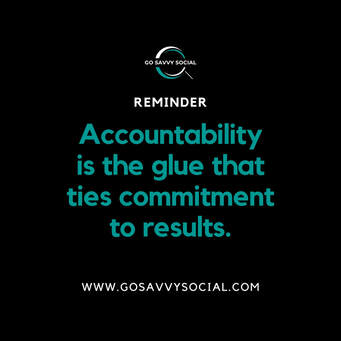

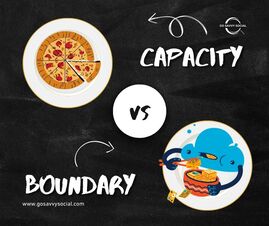
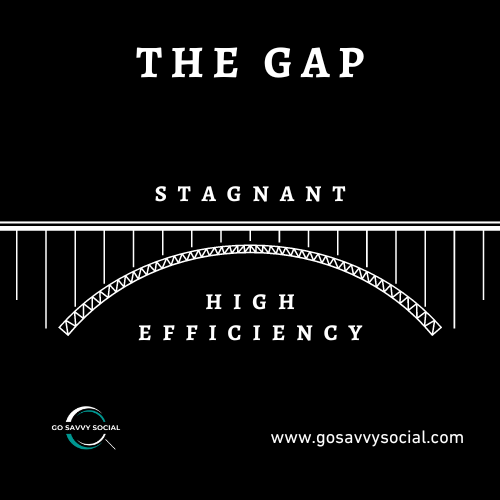

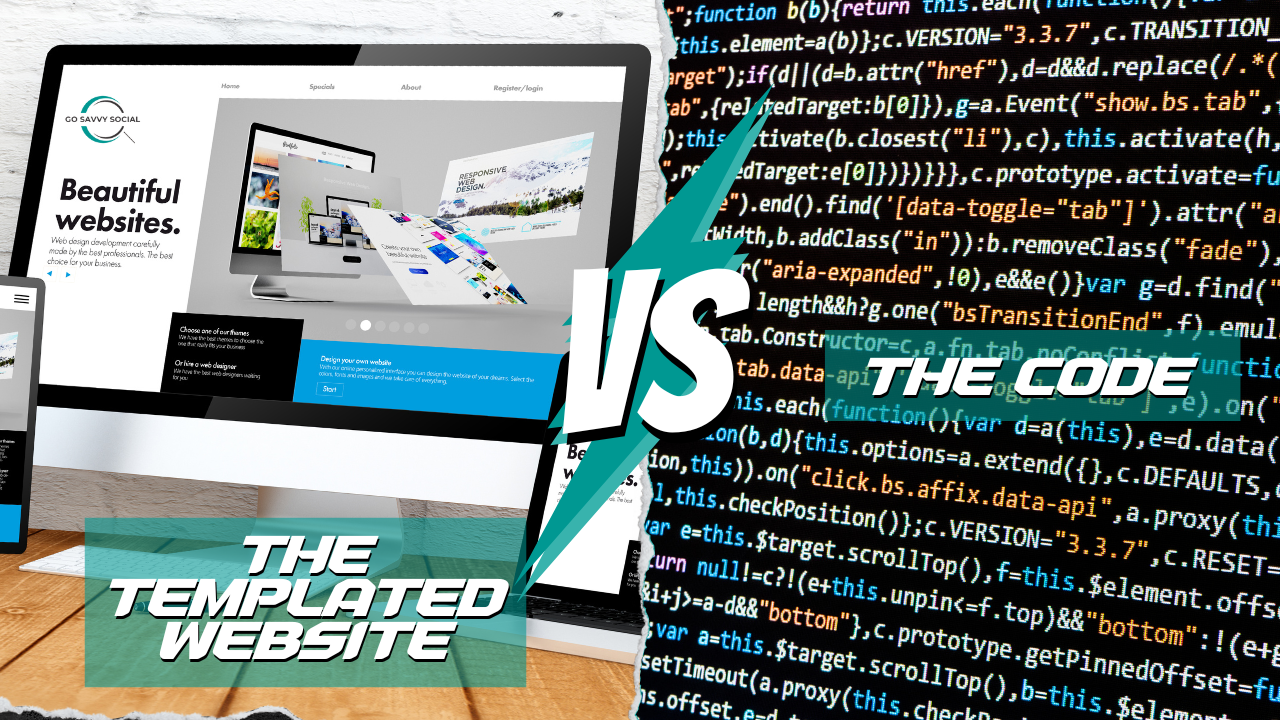

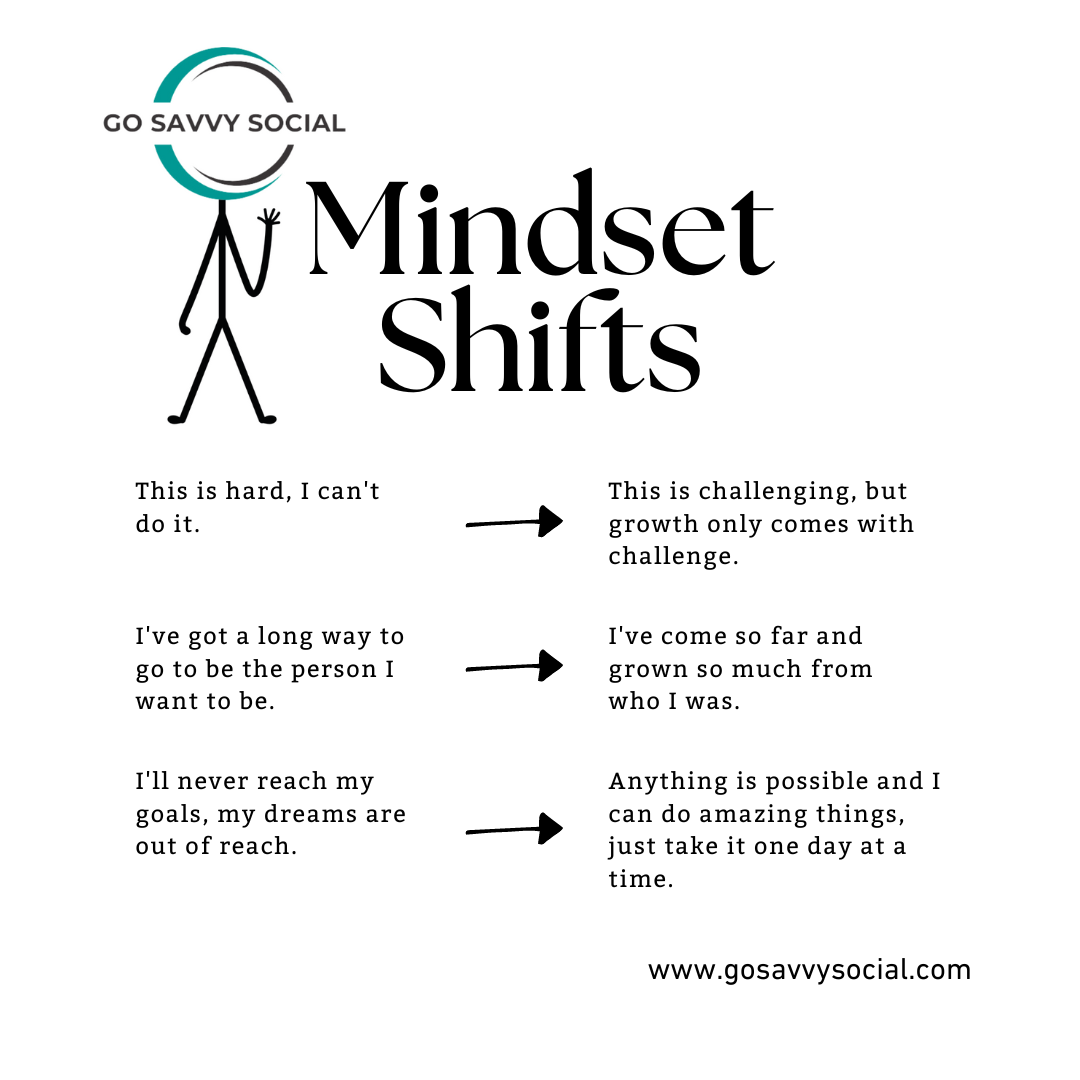
 RSS Feed
RSS Feed
